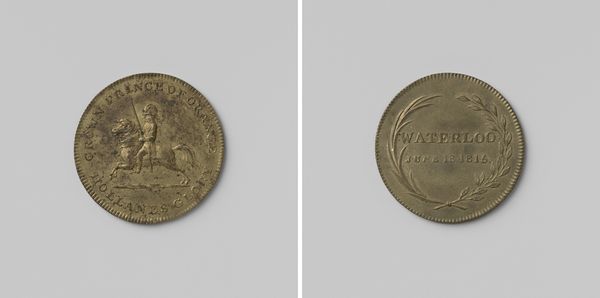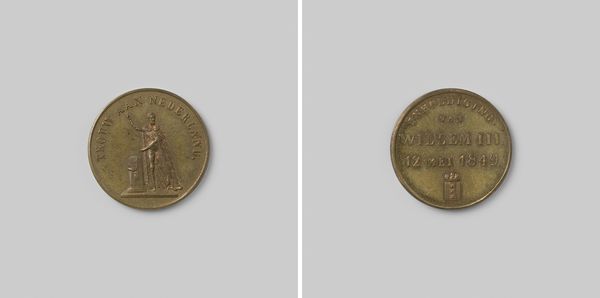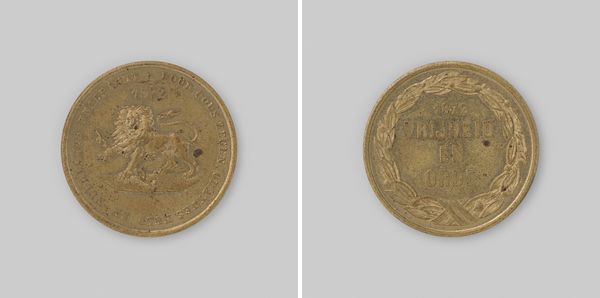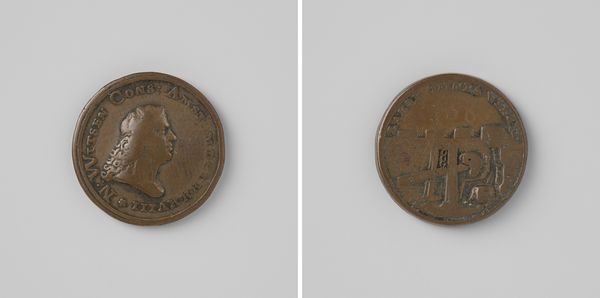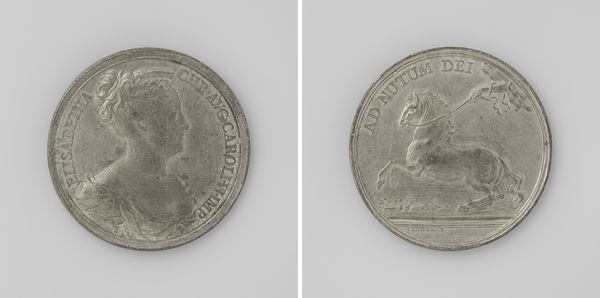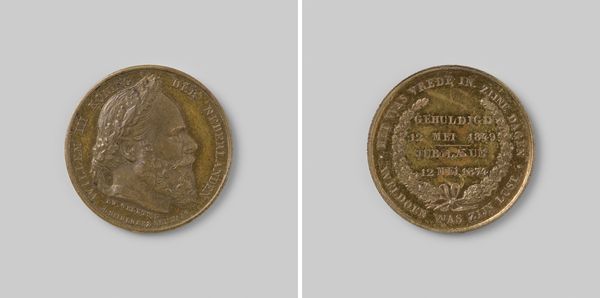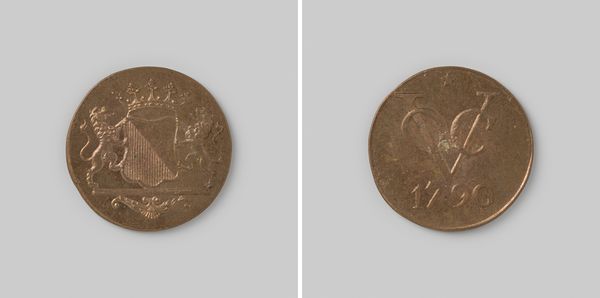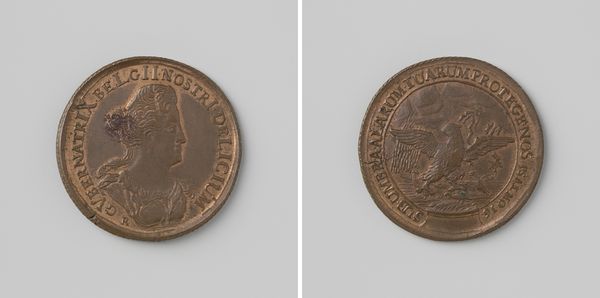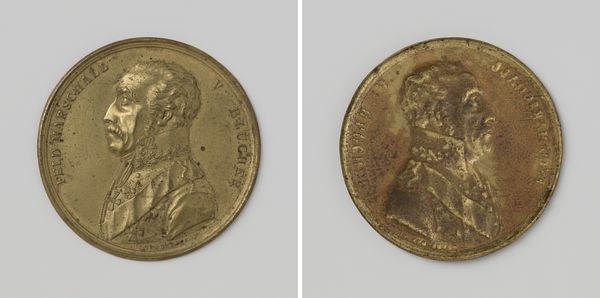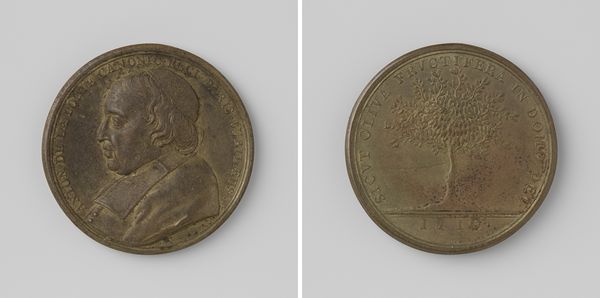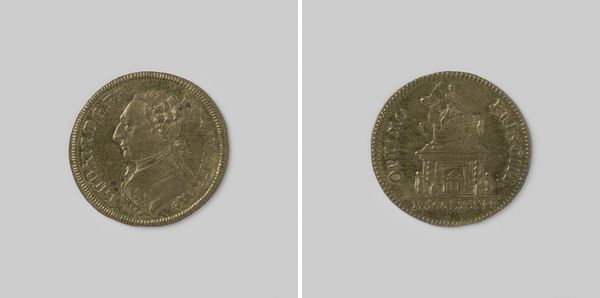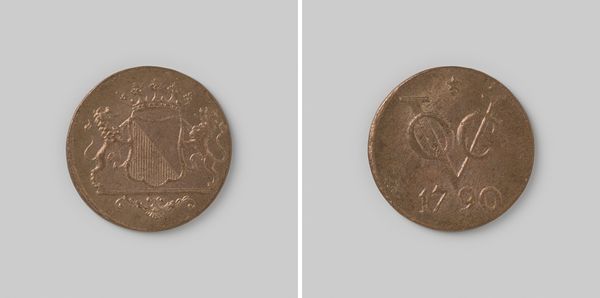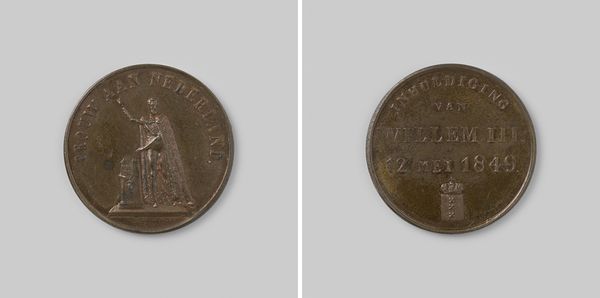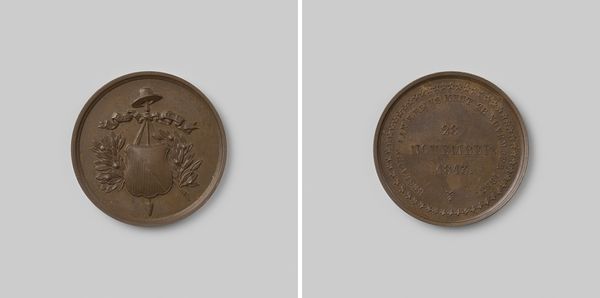
metal
#
portrait
#
metal
#
history-painting
#
academic-art
Dimensions: diameter 2.2 cm, weight 3.55 gr
Copyright: Rijks Museum: Open Domain
Editor: So, here we have a metal piece titled "Overlijden van de hertog van Wellington," or "Death of the Duke of Wellington," made in 1852. The small scale is interesting to me; it feels like a very personal, almost secretive tribute. What do you make of it? Curator: That's an insightful observation. Think about how power and commemoration often manifest. What narratives are subtly enforced through such objects? Consider that Wellington, a celebrated military figure, embodies British imperial power. This commemorative piece, produced after his death, isn't just a personal memento. Editor: It's about solidifying a particular version of history, isn't it? Curator: Exactly. The "heroification" of Wellington, like that of many historical figures, often omits or obscures the darker aspects of imperial conquest and its impact on colonized peoples. The choice of metal itself, likely gold or bronze, signifies value and permanence. Who do you imagine owned or circulated this object? Editor: Someone of means, definitely, reinforcing existing social hierarchies. I see now how something so small can carry so much weight in terms of power dynamics and historical narratives. Curator: Precisely. It invites us to consider whose stories are told and preserved. Can we read absences here? Whose voices are missing? Editor: I hadn't thought about it that way. It definitely reframes my understanding of commemorative objects. Thanks. Curator: And thank you, this micro-artifact reveals the macro-forces at play during that time. It's been insightful!
Comments
No comments
Be the first to comment and join the conversation on the ultimate creative platform.
